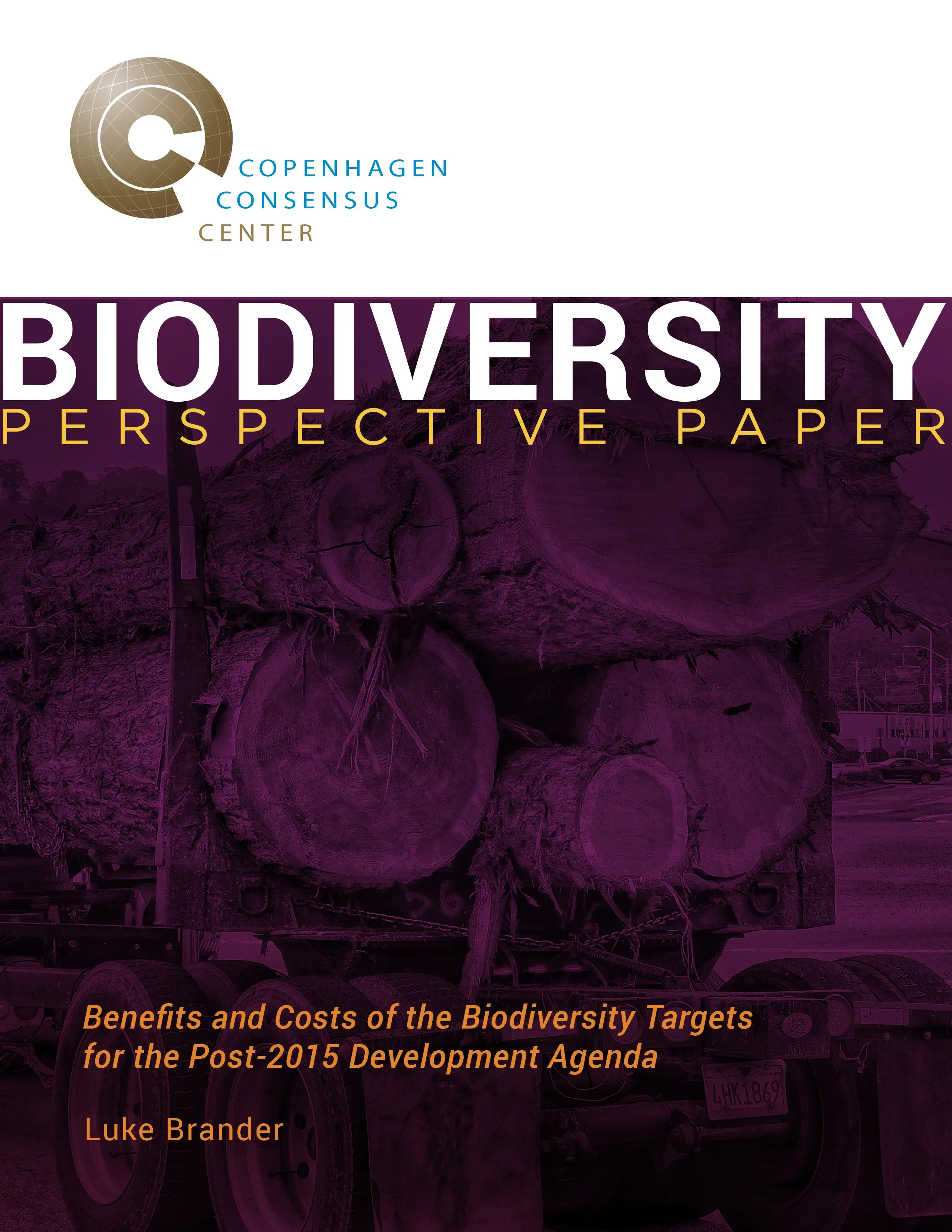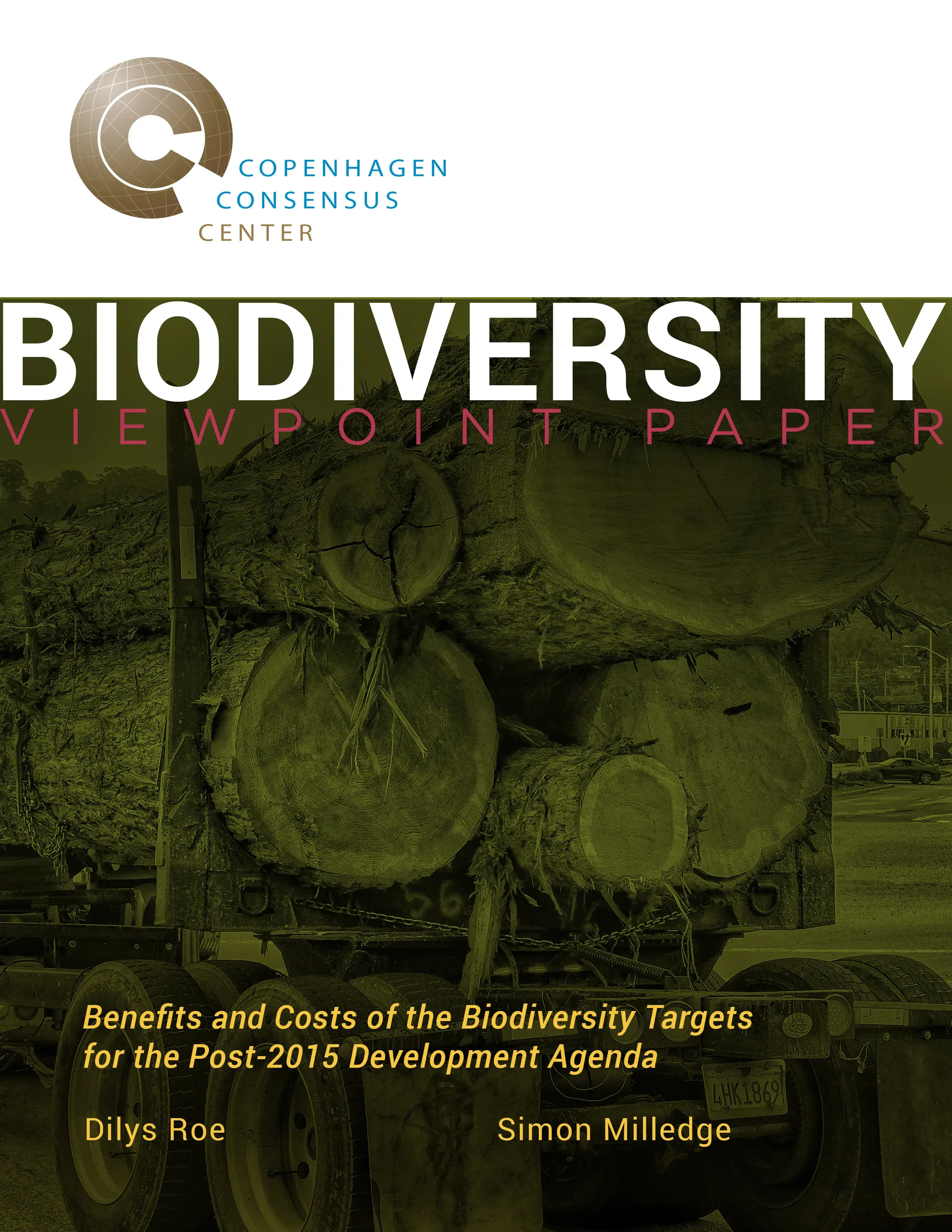Biodiversity
The following highlights have been determined using the recommendations provided in the assessment and perspective papers.
Within the focus area of Biodiversity the target that has the best benefit-to-cost ratio (BCR) is:
- By 2030, stem the loss of coral reefs by 50% which will return more than $24 for every dollar spent.
Other valuable targets within this focus area are:
- Reduce global forest loss by at least 50% which will return $10 for every dollar spent.
- Reduce global wetland loss by at least 50% which will return $10 for every dollar spent.
The following target has an acceptable benefit-cost ratio, although some possible costs of reforestation carried out using exotic species may result in losses of biodiversity.
- By 2020, ecosystem resilience and the contribution of biodiversity to carbon stocks has been enhanced, through conservation and restoration, including restoration of at least 15 per cent of degraded ecosystems, thereby contributing to climate change mitigation and adaptation and to combating desertification which has a benefit of $7 for every dollar spent.
The following target is relatively ineffective or there is large uncertainty regarding the benefit-cost ratio:
- By 2020, at least 17 per cent of terrestrial and inland water areas and 10 per cent of coastal and marine areas, especially areas of particular importance for biodiversity and ecosystem services are conserved through effectively and equitably managed, ecologically representative and well-connected systems of protected areas and other effective area–based conservation measures and integrated into the wider lands which will return $0.85 for every dollar spent.
This is a first attempt at estimating benefit-cost ratios for the biodiversity and deforestation targets. Future work needs to investigate both the benefits and costs more closely but especially the former. It should also look at who pays the costs and who benefits from these investments. Finally the study has considered targets individually and it is possible for one target to have benefits (or costs) on another. These linkages or spill overs need to be examined.
Scroll down to read our series of reports examining biodiversity targets for the post-2015 development agenda, written by leading economists and experts.
Assessment Paper
Anil Markandya, Scientific Director at the Basque Center for Climate Change, breaks new ground by providing a cost-benefit analysis of four targets from the Aichi Convention on Biological Diversity. Markandya argues that reducing losses to coral reefs and forests by 50%, has the largest benefits relative to costs with returns between $30-$100+ per dollar spent. In contrast, because establishment costs are very high, targets to increase coverage of protected areas are likely to be poor, providing less than a dollar for every dollar spent.
While for some ecosystems it may be possible to bring the rate of habitat loss close to zero by 2020, for others a more realistic goal is to halve the rate of loss. Significantly reducing habitat degradation and fragmentation will also be required in order to ensure that those habitats which remain are capable of supporting biodiversity.”
- Anil Markandya

Perspective Paper
Luke Brander, an environmental economist, critically assesses the methodology of the assessment paper, in particular noting that the values used by Markandya are unlikely to hold over the entire biome. Reestimating the cost-benefit ratios using a method that takes into account variations in the environment, Brander shows that reducing wetland losses has a positive but relatively low benefits for every dollar spent, while reducing coral reef losses has high benefits relative to costs (albeit with lower numbers than those estimated by Markandya).
The need for improved methods for large scale (global) assessments of the costs and benefits of conserving biodiversity and reducing the loss of ecosystems is driven by the recognition that currently applied approaches… do not produce sufficiently accurate information for use in cost-benefit analyses.”
- Luke Brander

Perspective Paper
Alistair McVittie, environmental economist at SRUC, also questions one aspect of the cost-benefit methodology provided in the assessment paper, noting that marginal costs are unlikely to hold for global analyses. Using the same adjustment as Brander, which accounts for the size of the environment and the proximity to human settlements, McVittie estimates the cost-benefit ratio for halting forest loss. He finds that the benefits are $2-$3 for every dollar spent, significantly lower than the figures presented by Markandya.
Put simply, can we defensibly use a $/ha value originally elicited for changing forest extent at one site by 10ha to value changes totalling thousands of hectares on a global scale?”
- Alistair McVittie

Viewpoint Paper
The viewpoint of Dilys Roe, Biodiversity Team Leader and Simon Milledge, Forest Team Lead both at IIED, commends the assessment paper as an interesting analysis of the Aichi Targets. However, Roe and Milledge find that the paper suffers two key weaknesses: (1) the post-2015 deliberations have moved passed the Aichi Targets and (2) analysis of individual targets is insufficient mechanism for determining priorities in a sustainable development framework that is intended to be transformative, universal and integrated. The viewpoint paper further discusses these two weaknesses and presents a “modular” approach to forests in the post-2015 development agenda.
IIED proposes a “modular” approach to thinking about forests within the Post 2015 framework – an approach which can also be applied to biodiversity. This approach explicitly recognises that right enabling environment – policies, processes, organisations, incentives and metrics – is needed for forests to help deliver sustainable development."
-Dilys Roe and Simon Milledge

The Post-2015 Consensus project brings together 60 teams of economists with NGOs, international agencies and businesses to identify the targets with the greatest benefit-to-cost ratio for the UN's post-2015 development goals.





